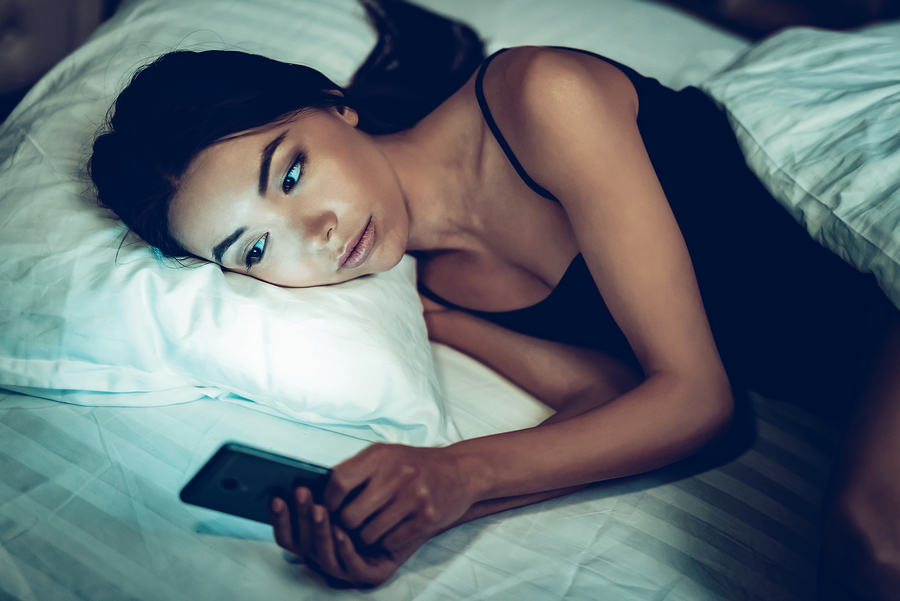
A study by the CDC shows that more than a third of adults and more than two-thirds of teenagers do not get enough sleep.[1] Undoubtedly, you’ve had your own experiences with sleepless nights, so the intensity of this problem is probably not surprising to you.
What may come as a surprise, however, is the pervasiveness of the problem, as well as one of the driving forces behind it. The decline in sleep quality for Americans has been called nothing short of an epidemic, and one of the dynamics fueling this epidemic is our ever-growing obsession with technology.
A 2011 poll by the National Sleep Foundation revealed some disturbing trends. The study showed that nearly four in ten Americans regularly bring their cell phones into their bedrooms and use them right before trying to fall asleep. The numbers skyrocket to roughly seven in ten when we look specifically at teens and adults under the age of thirty.[2]
Why is this bad news? Let’s begin by looking at the impact of texting right before bedtime. According to the same National Sleep Foundation poll, people who text in the hour before trying to fall asleep even a few nights a week are:
- less likely to report getting a good night’s sleep,
- more likely to wake up feeling unrefreshed,
- more likely to be categorized as “sleepy” on the Epworth Sleepiness Scale, and
- more likely to drive drowsy.[3]
Why are cell phones, computers, televisions, and other devices in the bedroom so detrimental to healthy sleep patterns? The obvious answer is that our cell phones wake us up in the middle of the night. The beeps and chimes don’t necessarily stop when we turn off the lights. Furthermore, being exposed before bedtime to even small amounts of the light emitted by electronic devices makes it more difficult to fall, and stay, asleep. The shortwaves interfere with the body’s natural production of melatonin, the hormone that controls our circadian rhythm, or cycles of sleeping and waking.
Using technology right before sleep is both physiologically and psychologically stimulating. Flinders University professor Michael Gradisar concludes in his research that interactive media, including video games and social media sites arouse and activate the brain in ways that noninteractive media, such as movies, do not.[4]
There is also a link between sleep patterns and depression. If you ask virtually any depressed person about sleep, you will almost certainly hear about distorted and disturbed sleep patterns. Why are sleep issues so prevalent among people suffering from depression? Sleep studies done with depressed patients have shown that depression changes our sleep architecture. People who are depressed experience an altered sleep cycle, entering REM sleep more quickly and spending less time is sleep stages three and four.[5] These stages are often called “priority sleep” because they are so critical to our emotional and physical well-being.
Depression and sleep deficits are unarguably entwined. Yet in that interwoven relationship lie opportunities for relief and healing. When you take measures to improve sleep quality in a depressed person’s sleep, you also relieve symptoms of his or her depression.
If you are struggling and have sleep issues, begin by creating a relaxing bedtime routine. When you engage in utilizing technology right before going to bed, your brain associates your bed with wakefulness. By helping your brain associate your bed with sleep, the transition into slumber will be much smoother.
Dr. Gregory Jantz is the founder of The Center • A Place of HOPE in Edmonds, Washington, and a world renowned expert on depression and anxiety treatment. Pioneering Whole Person Care in the 1980’s, Dr. Jantz continues to be a leading voice and innovator in mental health utilizing a variety of therapies including nutrition, sleep therapy, spiritual counseling, and advanced DBT techniques. Dr. Jantz is a best-selling author of 39 books and has appeared on CBS, ABC, NBC, Fox, CNN.
[1] “1 in 3 Adults Don’t Get Enough Sleep,” CDC Newsroom, CDC, last modified February 16, 2016, https://www.cdc.gov/media/releases/2016/p0215-enough-sleep .html. See also “Data and Statistics: Short Sleep Duration among US Adults,” Sleep and Sleep Disorders, CDC, last modified May 2, 2017, https://www.cdc.gov/sleep /data_statistics.html.
[2] National Sleep Foundation, 2011 Sleep in America® Poll: Communications Technology in the Bedroom (Washington, DC: The Foundation, March 7, 2011), https://sleep foundation.org/sites/default/files/sleepinamericapoll/SIAP_2011_Summary_of _Findings.pdf.
[3] Ibid.
[4] Rachael Rettner, “Nighttime Gadget Use Interferes with Young Adults’ Health,” Live Science, March 10, 2011, https://www.livescience.com/35536-technology-sleep -adolescents.html.
[5] David Nutt, Sue Wilson, and Louise Paterson, “Sleep Disorders as Core Symptoms of Depression,” Dialogues in Clinical Neuroscience 10, no. 3 (September 2008): 329–36, https://www.ncbi.nlm.nih.gov/pmc/articles/PMC3181883/.

